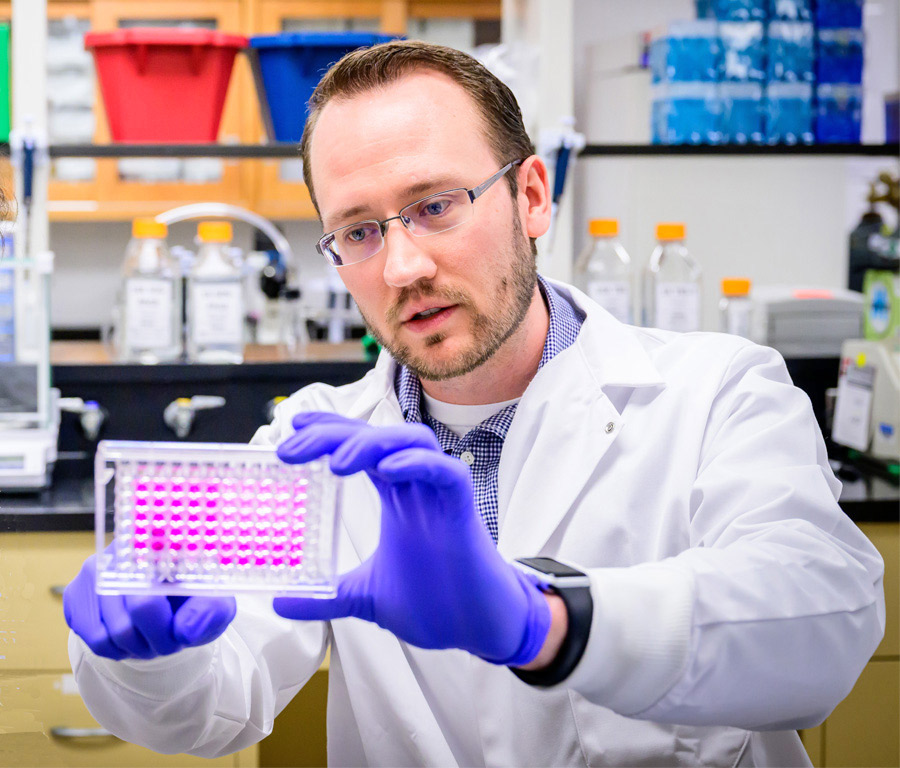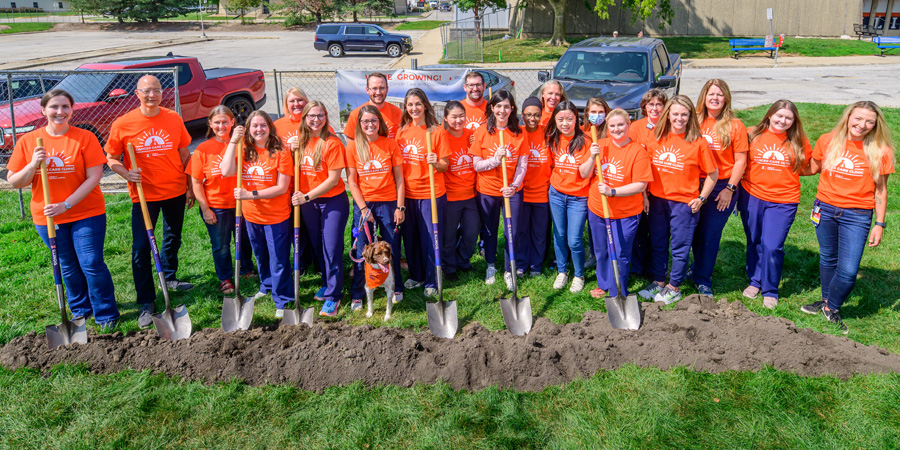It’s estimated that, by age 10, three in four small-breed dogs develop heart disease. They are especially susceptible to degenerative mitral valve disease.
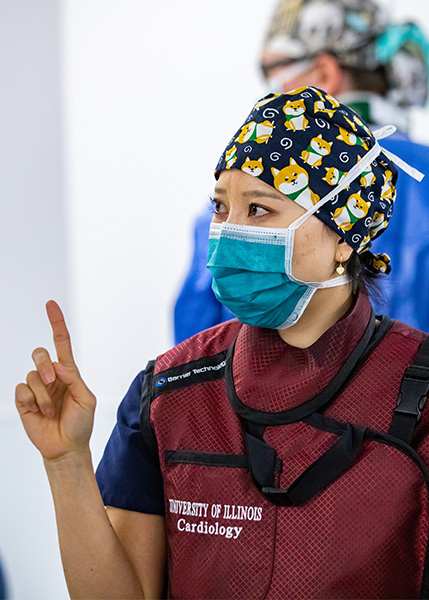
“Mitral valve disease is one of the most common and devastating heart conditions in dogs,” says Dr. Saki Kadotani, one of four boarded veterinary cardiologists at the University of Illinois Veterinary Teaching Hospital. “It can lead to heart failure, and once patients are in heart failure, the median survival time is nine to 12 months.”
Previously, treatment was limited to managing symptoms and giving medications that slowed progression of disease. However, the past decade has brought new surgical options for dogs with heart disease, including open-heart surgery.
“Open-heart mitral valve repair has been shown to extend lives, restoring precious time with beloved companions,” says Dr. Kadotani. “Sadly, this life-saving surgery is available at only a few centers worldwide, with waitlists so long that some dogs never get their chance.”
The Illinois cardiology team has growing expertise in surgical heart repair. In 2022, they became the second U.S. veterinary facility to offer the TEER procedure, a beating-heart repair of mitral valve disease in dogs.
But not all their patients are candidates for the TEER procedure. One of those patients was Oliver.

Oliver Goes to Japan
Dr. Kadotani first saw Jessica Braun and her Chihuahua, Oliver, in 2023. Oliver had been diagnosed with mitral valve disease about a year earlier and, with medication, had remained stable. But when his disease progressed to congestive heart failure, Braun knew she wanted to do whatever she could for him.
Her online research revealed the option of an open-heart mitral valve repair, but few hospitals offered it. The only U.S. facility, located in Florida, had a year-long waitlist. Braun set her sights on taking Oliver to the JASMINE Veterinary Cardiovascular Medical Center in Yokohama, Japan.
“JASMINE animal hospital has the world’s leading open-heart surgery team, led by Dr. Masami Uechi,” says Dr. Kadotani. “I had the opportunity to visit the facility in 2016, when I was a first-year cardiology resident at Illinois, and have been privileged to continue a professional relationship with Dr. Uechi. I also spent a week there in July earlier this year.”
Dr. Kadotani sent in the necessary referral paperwork for Oliver, and the hospital selected him as a candidate about two weeks later.
“I think it helped that Dr. Kadotani knew Dr. Uechi,” says Braun.
Red Tape, Then a Successful Surgery
Oliver had to get a special microchip and a series of rabies shots and undergo a six-month quarantine period to meet requirements for entering Japan. Then there was a one-week waiting period between arriving in Japan and the day of the procedure, as well as a critical post-operative recovery period in the hospital.
“Oliver’s surgery started at 8 a.m. and Dr. Uechi called us back around 11 a.m. Everything had gone well. Oliver hadn’t needed a transfusion, and his heart had restarted on its own.
“The surgery took place on Memorial Day in 2024,” Braun recalls. “Oliver is 11 and a half years old now. He has no heart murmur at all and takes no heart medications.”

Jessica Braun visited Oliver the day after his procedure, but he grew so excited that doctors advised no more visits during recovery until he was ready to leave the hospital.
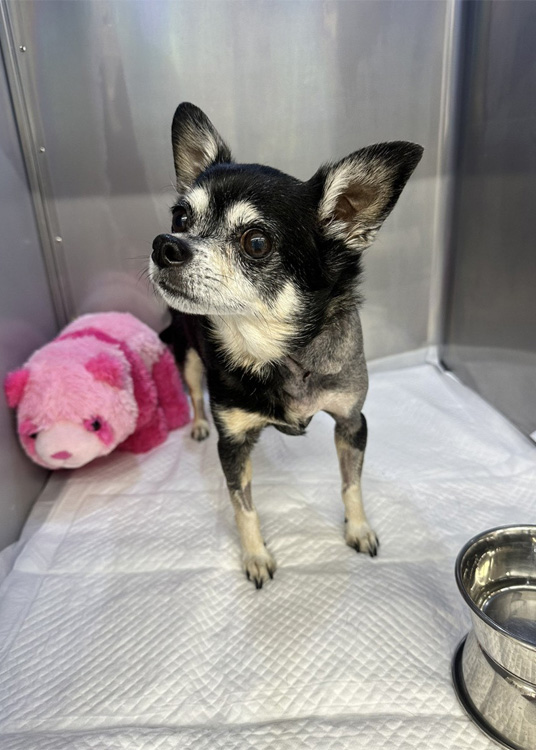
Oliver in JASMINE hospital in Japan for the open-heart mitral valve repair surgery
Because of her experience, Braun has become a moderator on Mighty Hearts, a website that supports dog owners seeking surgical treatment for their pets with mitral valve disease.
“I just couldn’t give up on my Oliver. Giving him this chance for more happy, healthy years was completely worth the time, money, and effort it took to get him the surgery,” says Braun. “There needs to be more places that provide this kind of care.”
Bringing Open-Heart Surgery to University of Illinois
Because of the tremendous need for more life-extending options, the Illinois cardiology team wants to build capacity to perform open-heart surgery for dogs with mitral valve disease. Achieving this goal requires many additional resources and skills.
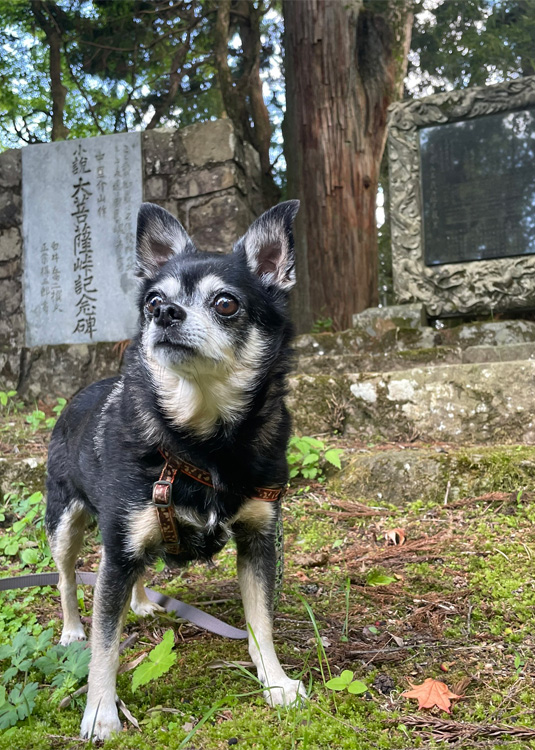
As with open-heart surgery in human medicine, the patient’s heart is stopped and blood is circulated mechanically while repairs are made to the heart. In the mitral valve repair procedure, a surgeon uses non-dissolving sutures to correct the valves in the left atrium.
“A perfusion machine costs roughly $80 thousand, for a refurbished one,” notes Dr. Kadotani. “We also need equipment to monitor the coagulation status of the patient.
“Additional personnel needed for the surgical team include a perfusionist and anesthesiologist, two surgeons, and specially trained nursing staff. It’s also critical to have an outstanding intensive care team to manage post-operative care.”
Seeking Support to Help More Patients
Building a team capable of performing open-heart procedures would allow Illinois to help pets with other heart problems, such as repairing congenital disease.
“The University of Illinois College of Veterinary Medicine has a wonderful foundation for launching an open-heart surgery program,” says Dr. Kadotani. “We have a strong and growing cardiology service, excellent interventional procedure facility, and good relationship with a world-leader in the field to assist with training.
“We are actively seeking financial support needed to make this program a reality that will give countless dogs and their families many additional years together.”
Braun agrees that having another repair program in the United States would benefit so many families.
“I’ve helped many pet owners on Mighty Hearts who have not gone to Japan or London [Royal Veterinary College] due to the sheer amount of paperwork and tests they would need to do,” she says. “Getting to Japan was no easy feat! I believe many more people would have the repair done if they didn’t have to jump through all the bureaucratic hoops in order to get the surgery.”


